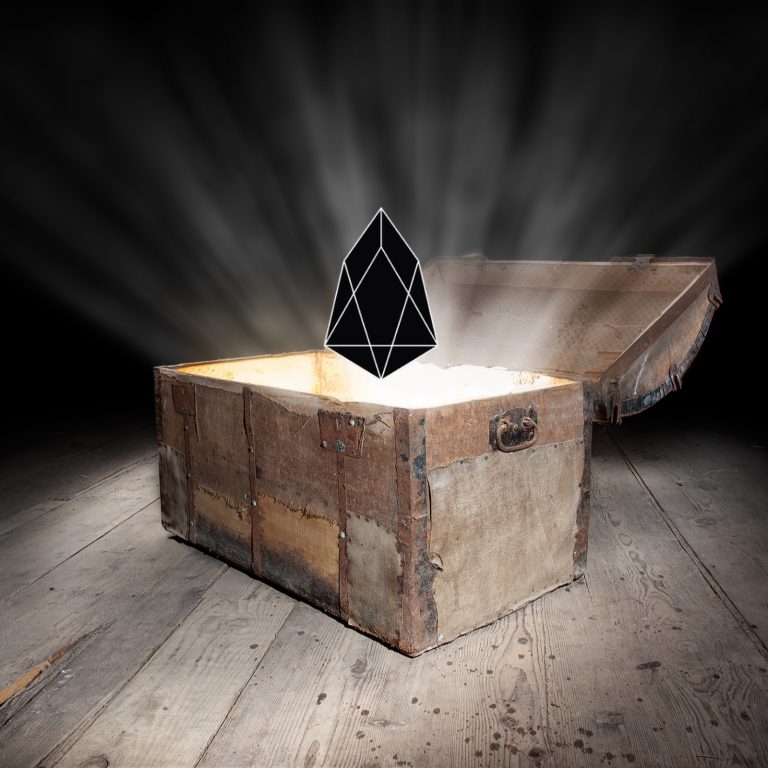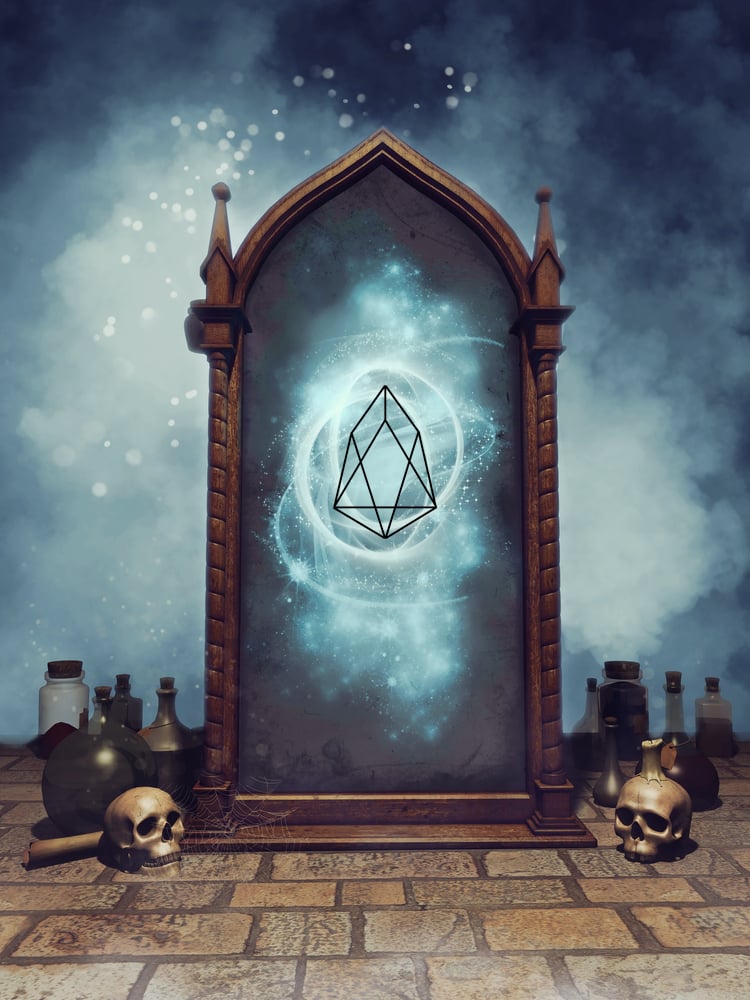Latest news about Bitcoin and all cryptocurrencies. Your daily crypto news habit.

On paper, EOS is a $6 billion company and the 14th largest cryptocurrency project in the world whose token changes hands for $10 a pop. It has raised over $700 million to date in the world’s longest running ICO, which began last June. By the time it’s done, the company, led by Dan Larimer, will have a $1 billion war chest at its disposal. The question is, will the charismatic founder stick around long enough to spend these riches?
Also read: Four Cryptocurrencies That Actually Meet the Definition of Vaporware
The Curious Case of the Man with the Itchy Feet
Dan Larimer is one of the crypto world’s best known entrepreneurs. The companies he’s founded – Steemit, Bitshares, and now EOS – are worth billions, making Mr Larimer as wealthy as he is successful. Everything the programmer-turned-visionary touches turns to gold. Then, once the Virginia graduate has gotten his latest platform up and running, he packs his bags and moves on to the next thing.
Fans of Dan Larimer’s work – of which there are many – see the EOS founder as an archetypal genius: blessed with too many ideas and talents to stay in one place for too long. Hagiographies portray Larimer as a visionary ahead of his time. If it wasn’t for Larimer jumping ship, the crypto community would never have had Steem or EOS. Thus, the loss to the projects Larimer leaves is the cryptocurrency world’s gain. Others aren’t so sure though, seeing the Bitshares founder’s itchy feet as evidence that his projects lack long-term viability. It’s easy to lead from the front when there’s money pouring in, but sticking around to build out infrastructure is what defines a true leader.
The Ethereum Assassin
EOS was heralded as “the ethereum killer”, but since Larimer launched his ICO in June 2017, ethereum’s value has multiplied five-fold and is the most widely used cryptocurrency with over one million transactions a day. To slay Vitalik Buterin’s “world computer” – or to even wound it – EOS is going to need a big axe. Ethereum is growing stronger with every passing day, while the only thing EOS has growing is its bank balance.
 In an era where popular ICOs can sell out in a matter of minutes, EOS is the antithesis: a slow-funded project that will take an entire year to complete its token sale. Some see this as evidence of the egalitarian nature of the project, permitting as many investors as possible to participate. Others demur, viewing EOS as nothing more than a cynical cash grab whose primary purpose is to enrich its founders. Concerns have also been raised over the fact that the token affords no “rights, uses, purpose, or features”, although this seems to be a reference to the fact that there will token swap once EOS switches from ethereum to its own blockchain.
In an era where popular ICOs can sell out in a matter of minutes, EOS is the antithesis: a slow-funded project that will take an entire year to complete its token sale. Some see this as evidence of the egalitarian nature of the project, permitting as many investors as possible to participate. Others demur, viewing EOS as nothing more than a cynical cash grab whose primary purpose is to enrich its founders. Concerns have also been raised over the fact that the token affords no “rights, uses, purpose, or features”, although this seems to be a reference to the fact that there will token swap once EOS switches from ethereum to its own blockchain.
Uncapped ICOs: Fairness or Avarice?
Uncapped token sales are controversial, not least due to the mixed results recorded by the largest ICOs completed to date. The jury is still out on Bancor, which raised $153 million, while Tezos ($230 million) has been mired in lawsuits. Like Tezos, EOS investors may have to wait a while before they can use their tokens for their intended purpose. Critics have questioned the project’s viability, calling it “Delicious smoke and beautiful mirrors”. As one writer pointed out:
The EOS development cycle is incredibly long by industry standards. Although this might be a safety net on the founders’ part, ensuring that they can keep to their promises, this also leaves competitors with ample time to develop their own alternative solutions. If Ethereum manages to resolve its scalability problems in time, for example, it is unlikely that projects and developers used to the Ethereum ecosystem will rush off to join an unknown and untested development environment.
And then there’s Dam Larimer himself, crypto’s commitment-phobe. One of his biggest critics is former colleague Charles Hoskinson, who has ventured that Larimer “hasn’t finished a project yet.” To say that Hoskinson and Larimer no longer see eye to eye would be an understatement. After the EOS founder delivered a withering critique of Cardano, Hoskinson sarcastically responded: “It can be summarized as evil Charles stole all my brilliant work and didn’t cite me. DPoS is better. Their math stuff validates me. Their stuff doesn’t work. Peer review is what I say it is. I’m a genius”, before following up: “I also want to point out that Dan has repeatedly and publicly said that I have no technical skills and ride on the coattails of other people. The dude is frankly a loser.”
 EOS: Ethereum killer or smoke and mirrors?
EOS: Ethereum killer or smoke and mirrors?
As a riposte, Hoskinson linked to a Bitcointalk thread from 2010 in which Satoshi Nakamoto famously retorted, in response to Larimer’s complaint that 10 minutes was too long for a block time, “If you don’t believe me or don’t get it, I don’t have time to try to convince you, sorry.”
Business partners fall out all the time, and it is impossible to go through life without making a few enemies. Thus, Hoskinson’s thoughts on Larimer’s track record should be taken with a pinch of salt. One concern that has been raised about EOS pertains not the character of its founder, but rather his code. It has been alleged that EOS shares much of the Bitshares’ code, and is simply Larimer’s previous project rebranded. In EOS’ defence, there has since been extensive code uploaded to Github, albeit nothing in the last two months, and given the length of time it will take for the project to be developed, it is likely that the MVP will look decidedly different to Bitshares. As for when that MVP will arrive, EOS’ roadmap suggests that v 1.0 is likely to be in place by spring 2018.
A Smooth-Talking Genius
In person Dan Larimer is, by all accounts, affable, charismatic, and a born salesman. He presents a compelling vision of his projects and has proven extremely adept at drumming up enough support to turn them into reality. Larimer also appears to keep a carefully cultivated image, making it hard to gain an insight into his character. Someone has requested that Google remove specific search results for the entrepreneur, citing data protection laws known as the “right to be forgotten”.
Larimer used to maintain a regular blog that included posts such as “Why I Like Ethereum”. It hasn’t been updated since March 2016, presumably because Larimer has had more pressing matters to attend to. The name of his final post? “How to Launch a Crypto Currency Legally while Raising Funds”. In it he urges startups to “complete the currency and protocol prior to launch”. The EOS founder has certainly been adhering to that mantra with his own project.
Should EOS prove to be a success, Dan Larimer will deserve the sort of plaudits normally meted out to the likes of Vitalik Buterin. But as the case of Ethereum shows, projects overseen by a strong leader are at risk should the founder walk away. EOS investors will be hoping that this time Dan Larimer can be persuaded to stick around and enjoy his creation.
Do you think Dan Larimer will stick around to build out EOS? And does it have any chance of beating Ethereum at its own game? Let us know in the comments section below.
Images courtesy of Shutterstock and Steemit.
Tired of those other forums on the subject of Bitcoin? Check forum.Bitcoin.com.
The post EOS Has a $1 Billion War Chest – But Will Larimer Stick Around Long Enough to Enjoy It? appeared first on Bitcoin News.
Disclaimer
The views and opinions expressed in this article are solely those of the authors and do not reflect the views of Bitcoin Insider. Every investment and trading move involves risk - this is especially true for cryptocurrencies given their volatility. We strongly advise our readers to conduct their own research when making a decision.
